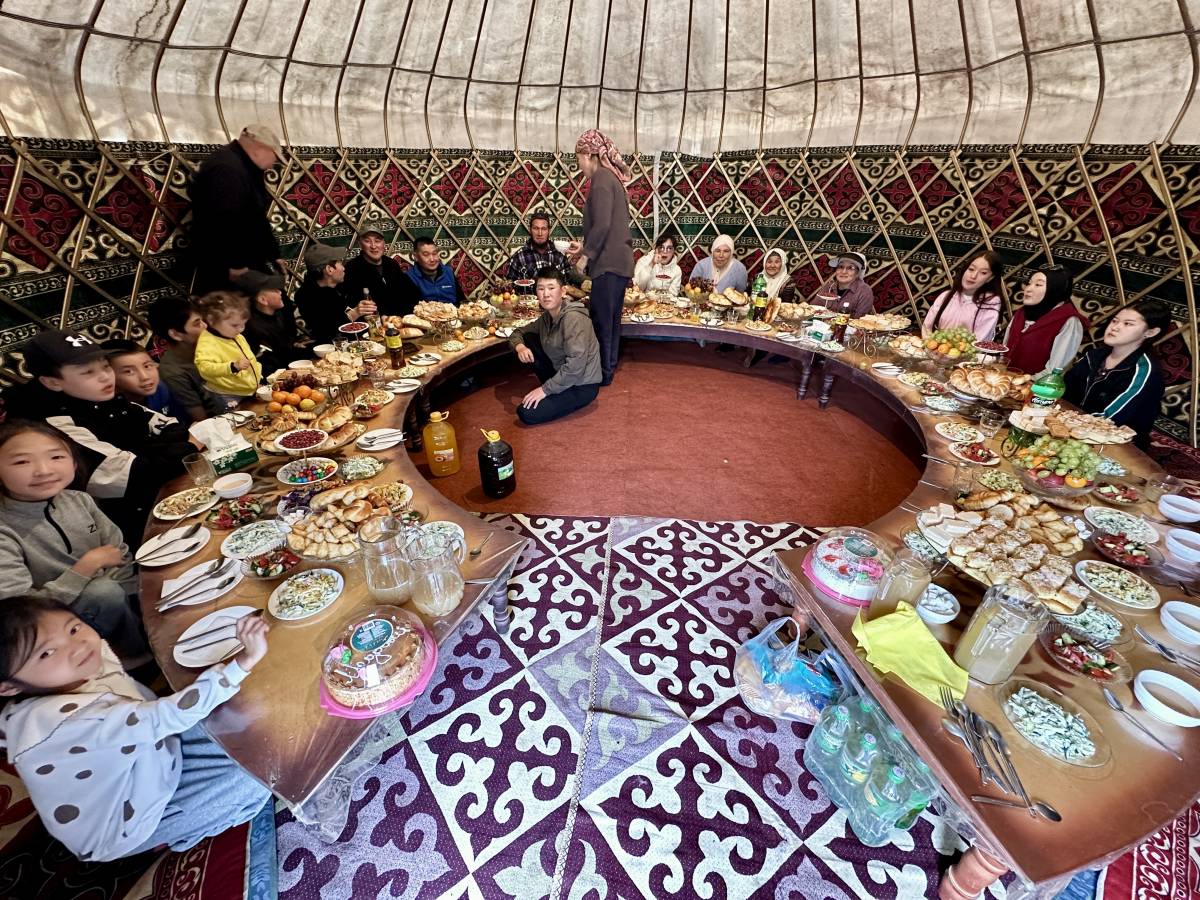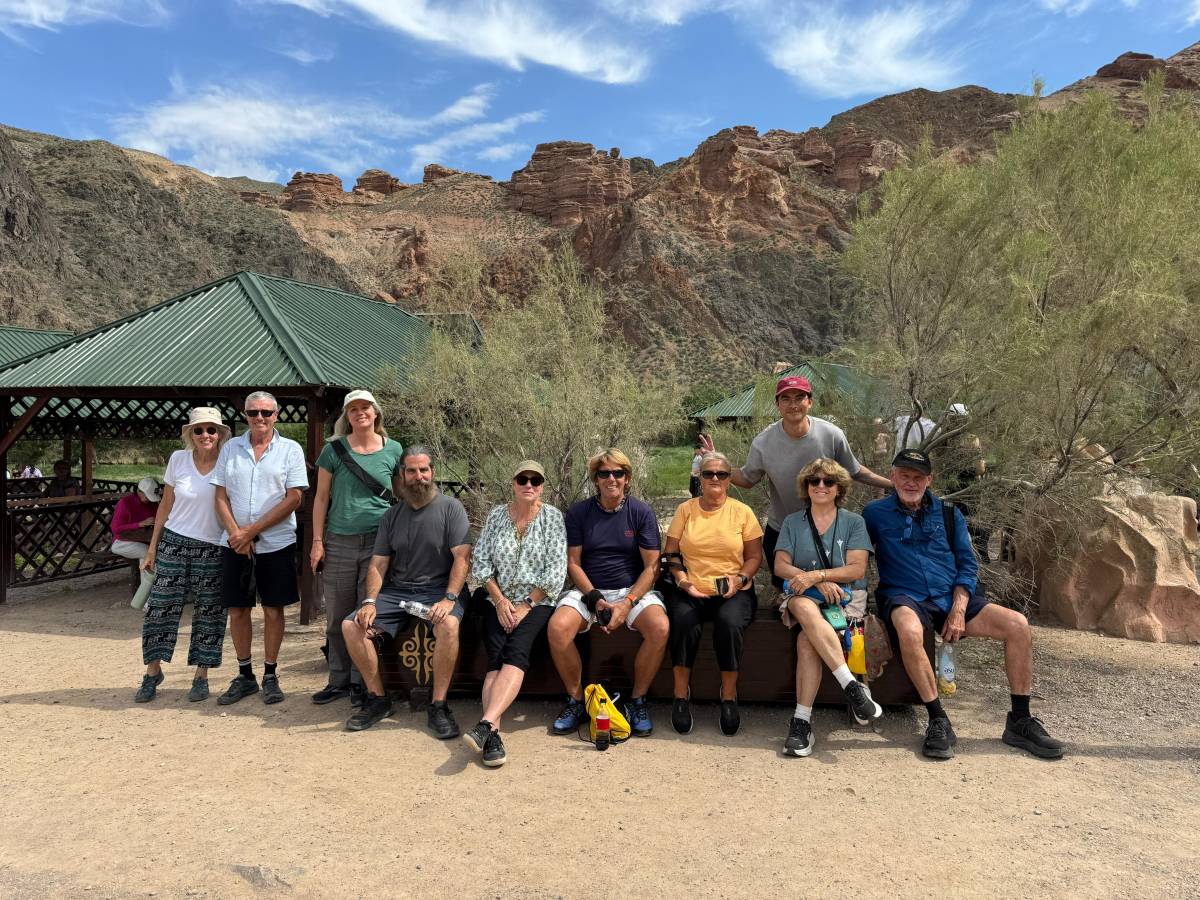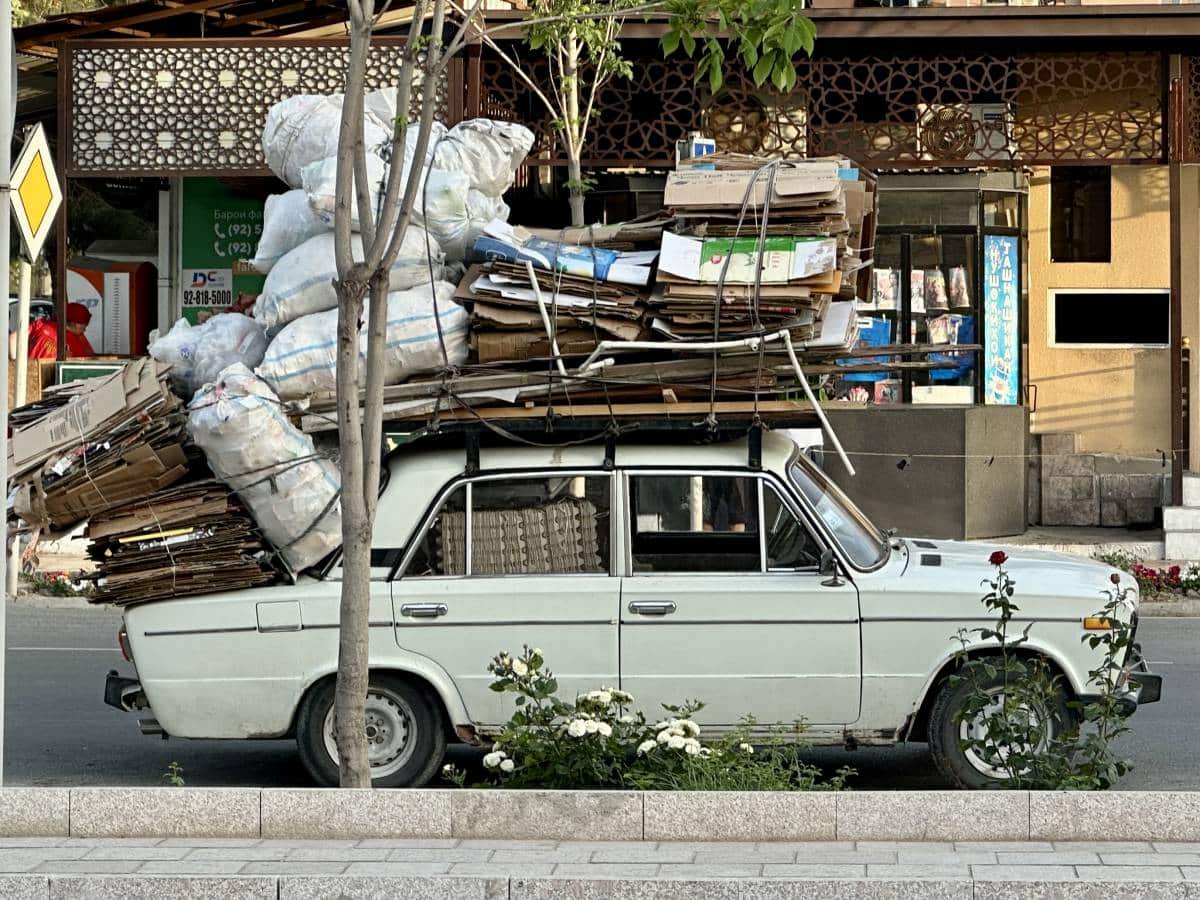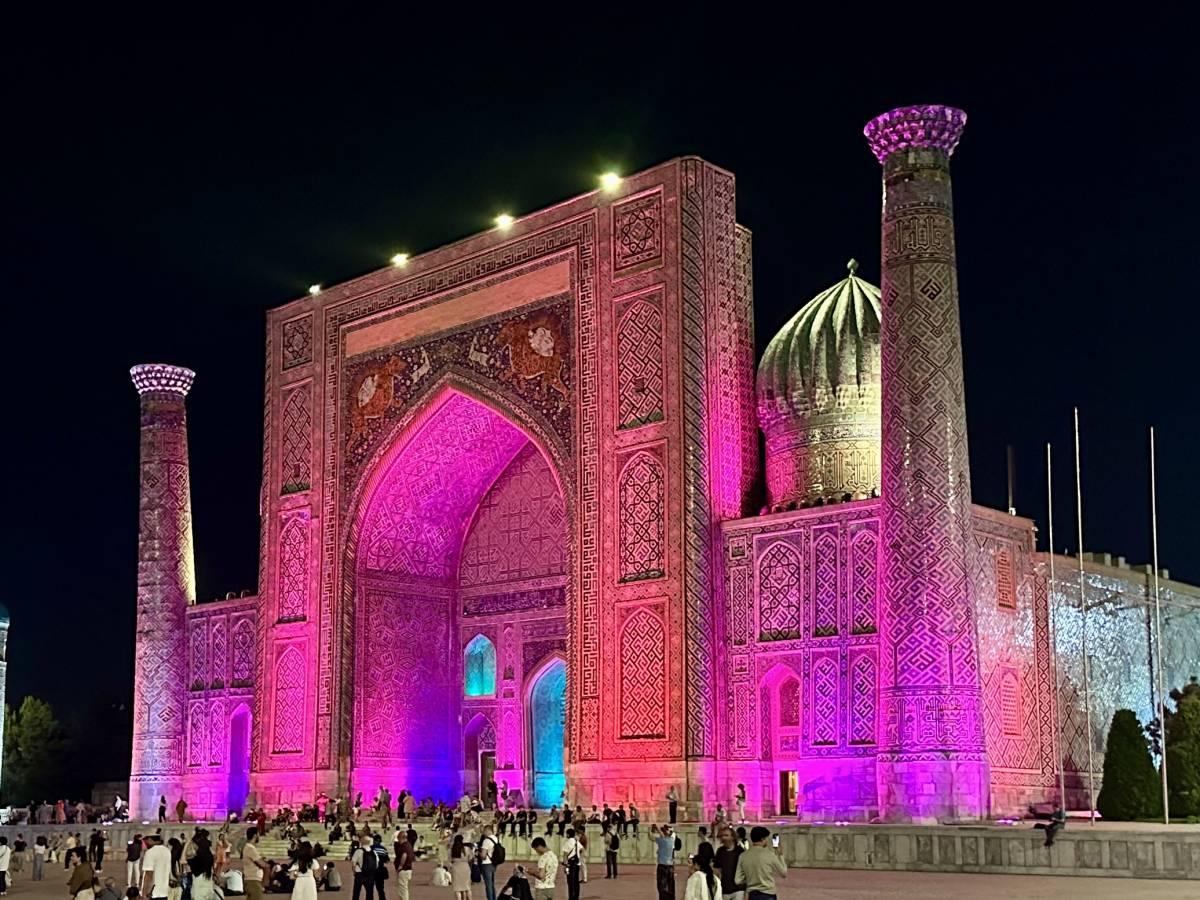
Uzbekistan
The border crossing into Uzbekistan was smooth and we were met on the other side by Anastasia from Kyrgystan and Natalie from Kazakhstan – both around Georgia’s age. We boarded another 50 seat coach for a 90 minute drive to Khiva. It was a blessing to be on tarmac roads.
We had two nights at a guest house inside Old Khiva which is a walled city a little like Dubrovnik, but not quite as spectacular. There were a lot more tourists in Khiva which meant we felt less like “exhibits”. Uzbekistan had 8 million tourists last year compared with 10,000 in Turkmenistan. In 2024, Khiva was named the Tourism Capital of the Islamic World.
Uzbekistan is split into 12 regions, one autonomous republic, and one independent city. The population is 37.5m – the most in the five stans. Uzbeks gets 300 sunny days per year putting it well above Glasgow. 97% of the people identify as Muslim. Some random facts: Uzbekistan finished 13th at the Paris Olympics, it’s one of only two double landlocked countries in the world, and “Plov” is a dish which has been including in the UNESCO list of masterpieces. Who even knew this list existed?
We arrived late so I had beer for dinner and then retired to my small single bed with a world class mattress (compared to the yurt).
On Friday we were taken on a walking tour by local guide, Mohammed. He was a super fellow. Towards the end I abandoned the group to climb a minaret. My thighs still haven’t forgiven me. I crawled up the narrow staircase on all fours.
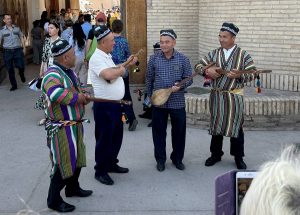
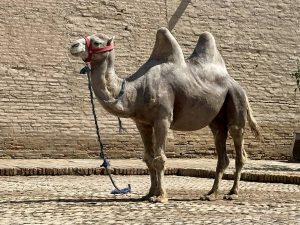
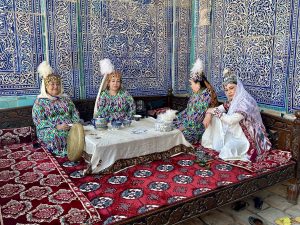
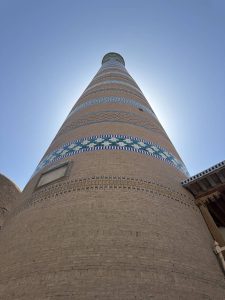
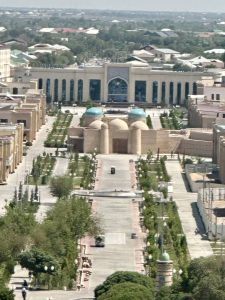
Later in the afternoon I walked the city walls which were a tad disappointing because both directions led to a dead-end. Dubrovnik was much better.
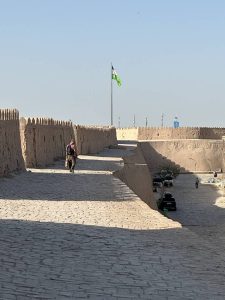
We left at a reasonable time on Saturday morning with a six hour drive ahead of us. Luckily we had five seats each on the coach and the journey went quickly. Bukhara was our destination which is another city on the Silk Road. Once again we stayed in the old part of town and it was simply delightful. Our tour leaders took us for a walk around town before dinner. Some more implausible legends followed and I finally went rogue after 90 minutes and did my own tour.
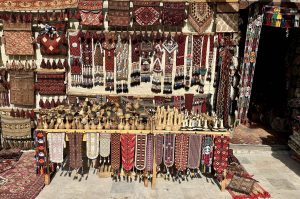
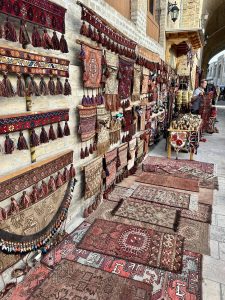
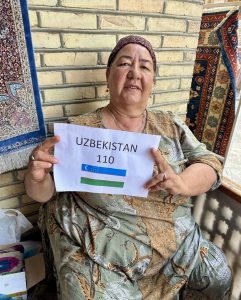
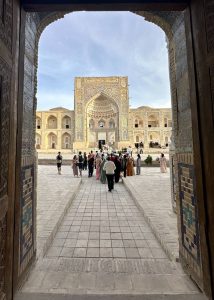

Sunday I elected to remain in a supine position as my legs were complaining and I needed the rest.
On Monday we had a free morning to look around before catching the high speed train to Samarkand. It was a sleek looking train and rather jolly comfortable, with some of the best pulldown trays I’ve seen on any train. We had a 30 minute delay towards the end because a wheel fell off. At one point the train started going the wrong way.
The hotel in Samarkand was probably the worst we’d stay at. I had no window, three narrow single beds next to each other, and a bath too small for a cat. We walked to dinner and sat in long Chesterfield sofas. By the end of it we all had damp arses.
Next up was the light show in Registan Square which was the highlight of the day. Three fantastic buildings with lights dancing all over them.
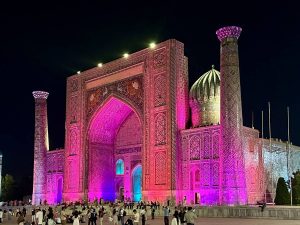

On Tuesday a local guide called Aziza turned up and took us on a five hour walking tour. History mentions three important figureheads, or rulers, in central Asia. Genghis Khan, Alexander the Great, and a chap called Amir Timur. It turned out that Shah Jehan, the fellow that built the Taj Mahal for his wife, was a descendant of Timur.

Timur had 18 wives, four sons, and two daughters. His favourite wife was a descendant of Genghis Khan. He started his conquests in 1363, (seizing land, not chasing women). In 1370 he became the first Amir in what was to become the Timurid Empire which stretched from Iraq all the way to Delhi, India, and up into Mongolia. It encompassed all, or part of, 27 modern day countries. He reigned from 1370 until his death in 1405, and he chose Samarkand as his capital. The Empire lasted until the year 1507.
Just to keep you up-to-date with the empires. The Mughal Empire started in 1526 and lasted until 1857. All of the Mughal princes were from the Timurid dynasty, hence Shah Jehan. British rule in India started in 1858 and lasted until 1947.
The mausoleum was amazing, but it turned out that Timur wasn’t buried there. His bones were in a nearby crypt that we weren’t allowed to enter. In 1941, against the advice of three Uzbek wise men, Stalin opened the crypt hoping to find treasures of some sort. The wise men warned that it might start a war. 12 hours later, Hitler invaded Russia. The wise men walked away saying, “We told you so”.
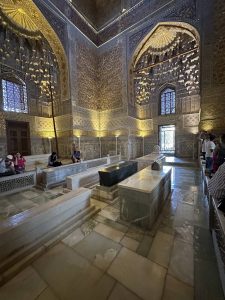
We trekked to Registan Square, where we’d been the night before, for a daytime visit of the madrasahs – universities, and a mosque, making up the three buildings. We were treated to a local man playing a variety of ancient Uzbek musical instruments. After the stringed contraptions, he got out his tambourine which was easily the most enjoyable.
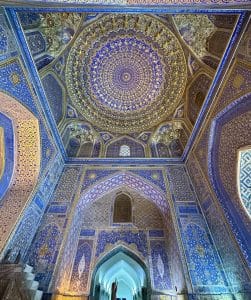
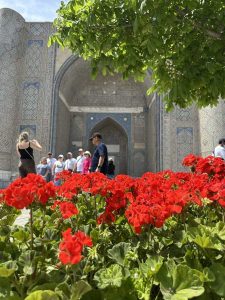
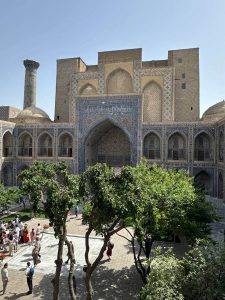
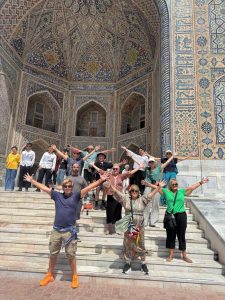
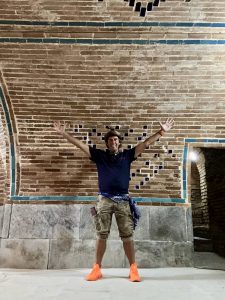
Our evening entertainment was to visit a local family and eat Plov. It was actually more enjoyable than I expected. Three generations living in a compound, and I was allowed to take over the music selection.
After a lazy Wednesday morning, we headed off on a bus tour of Samarkand. I wasn’t looking forward to the first item on the agenda – a paper factory, but it turned out to be located in a tranquil spot, and the demonstrations were surprisingly interesting. It was a very labour intensive process just to produce one piece of paper – all from the bark of a mulberry tree. I’m not sure I’d have the patience for it.
Next was the carpet factory which had its moments. Regrettably we were being shown around by a complete dickhead. He was about 25 and I disliked him immediately, as did all of us. The workers get paid about $800 a month and a finished rug sells for about $10,000. We saw them making the knots – 2.1 million required for a rug of 1m by 1.5m. At 8,000 knots a day, it takes a while.
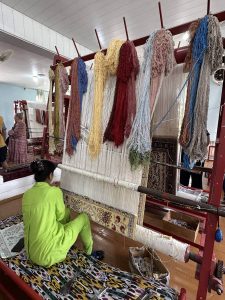
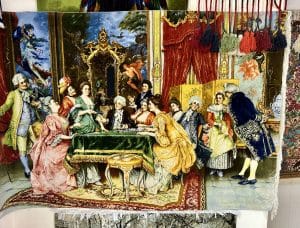
Our third stop was the highlight. A necropolis containing 20 mausoleums – some more decorative than others.
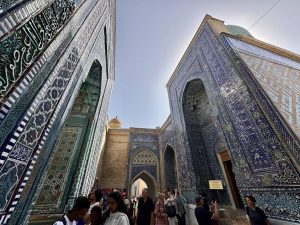
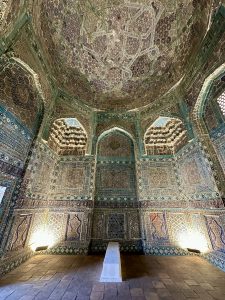
We bussed to the train station with a 90 minute wait for the train to Tashkent, the capital of Uzbekistan. The journey took just over two hours before being transported to our hotel – Hotel Uzbekistan, one of the original Soviet “Intourist” hotels in the city. It was large – 17 floors, and typically Soviet in that the furniture was horrendous.
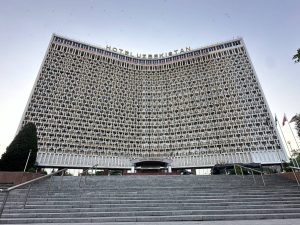
Our last full day in Uzbekistan started with a walking tour of the city. Vadim was excellent and it was the most interesting of all the local tours to date. This was in part because he talked about more recent historical events that we knew something about.
In 1865 the Russians invaded the region and two years later Tashkent became the capital of all five stans. It wasn’t until 1970 when civil war split the single region into five soviet republics. Tashkent was the fourth largest city in the whole of the Soviet Union. There was an earthquake in 1966 measuring 7.5 on the Richter scale where only 8 people died. It’s worth mentioning that Tashkent was the location of one of Tim Henman’s singles titles when he won the inaugural President’s Cup in 1997. Go Tim.
Across the road from the hotel was a statue of Timur on horseback. The site originally had a statue of Konstantinos Petrovich von Kaufmann, the first Governor General of Turkestan. In the late 1940’s a statue of Joseph Stalin was erected. When it came to light that Stalin wasn’t a particularly nice man his statue was removed and seven years later in 1968 a statue of Karl Marx was erected. After Uzbekistan gained independence, the square was renamed again, and in 1994 the current statue of Amir Timur was established.
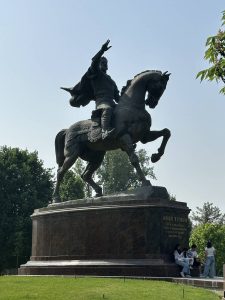
We strolled to a rather nice dwelling which was once the house of Grand Duke Nicholas Konstantinovich who was the grandson of Nicholas I of Russia. He was exiled to Tashkent after having an affair with an American woman and stealing some diamonds (which he denied). He was declared to be insane rather than accused of being a thieving womaniser.
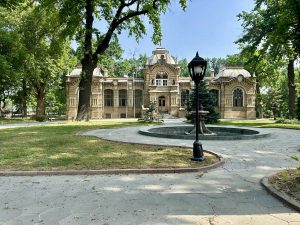
Next was a big bust of the First Secretary of Uzbekistan, Sharof Rashidov, who was the longest serving FS from 1959 to 1983. Rashidov had a good working relationship with Soviet leader, Leonid Brezhnev, who turned a blind eye to corruption. When Brezhnev died in 1982, Yuri Andropov took over and launched an investigation into the claims of corruption. Rashidov died the following year. A little over three months later, Andropov, who had been in charge of the KGB for 15 years, also died, having been in office for only 15 months. It’s worth mentioning that Andropov’s successor, Konstantin Chernenko died after 13 months in office in March 1985. Three Soviet Union leaders died – 1982, 1984, and 1985.
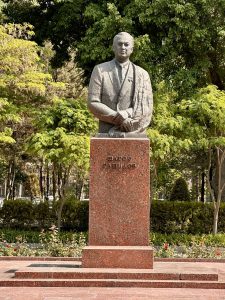
Next up was independence square which had a rather nice water feature.
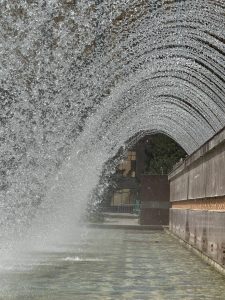
We jumped on the metro which has four lines and a total of 49 stations. The first line was built in 1977. A few stops later we reached the bazaar which was a scruffy place. I didn’t last long there and left the group.
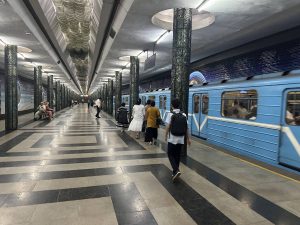
I headed back on foot and the highlight of my 90 minute walk was the World War II memorial known as Memory and Honor Square. It was one of the best I’ve seen, and I’ve seen a few. The names of all the fallen Soviet soldiers were inscribed on large gold metal plates that could rotate like a vertical Rolodex. The centrepiece was an eternal flame marking the “Tomb of the Unknown Soldier” looked upon by the motherland figure.
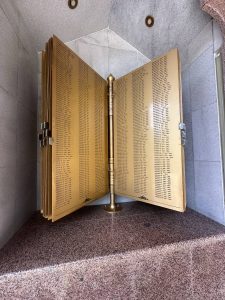
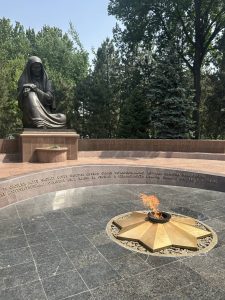
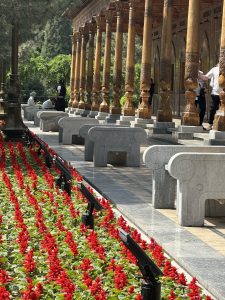
I had truly been a wonderful morning traipsing round Tashkent. It was Ashgabat with soul.
Uzbekistan has the fourth largest gold deposits in the world which is reflected in the teeth of many Uzbeks. They are also big in uranium. One thing I noticed in my visual observations was the number of Chevrolet cars. Well over 50%. It turned out that Chevrolet has the only car production factory in the country.
8 nights – 2 nights in four different cities. I liked Uzbekistan a great deal.

